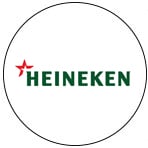
GC: How did you come to be leading the legal function for Heineken across Asia Pacific?
Geraldine Lim: I joined Heineken in 2012 from Asia Pacific Breweries, after being responsible for handling much of the legal side of the integration of the two businesses. The amount of compliance and regulations that had to be followed as part of the acquisition, including de-listing a company that had been on the stock exchange since the 1930s was a big deal! But I’ve been working in beer for a long time now.
GC: Where does Heineken fit in the competitive landscape across Asia Pacific?
GL: Here in Singapore, for Heineken, our biggest competitor is Carlsberg. But as the market is becoming increasingly sophisticated, we’re seeing a huge craft beer movement, which is really the competitor to watch in the coming years. Elsewhere across Asia Pacific, we face local giants like San Miguel in the Philippines and Sabeco in Vietnam.
China is a different story entirely. If you’re looking at the mainstream beer market as a foreign brewer, you’re going to be dwarfed by the likes of Tsingtao and Snow. That means we really target the premium end of the market.
GC: How difficult is the regulatory side of your job, considering alcohol is such a highly controlled product and you operate across a hugely diverse region?
GL: From a legal perspective, navigating the different regulatory and cultural rules across the different jurisdictions that I am responsible for can be complex. Some markets for us are dark – meaning that we are unable to do any advertising – whereas other countries have religious dispositions that are not so in favour of alcohol. That means that for Heineken, it isn’t sufficient to just be legally compliant, we must be culturally sensitive too.
As I am responsible for such a large geographic region, staying up to date with legal developments for an industry as highly regulated as alcohol is crucial. In Indonesia, we had a situation where they banned the sale of beer in convenience stores overnight. Similarly challenging are areas where there are very stringent alcohol advertising laws, such as Malaysia or Sri Lanka, but it remains unclear what exactly you can and can’t do.
GC: Those complexities must make lobbying and engaging with officials an important component of business. How much of a role does legal play in this area for Heineken?
GL: There’s definitely a role for legal to play, but at Heineken it’s more behind the scenes as opposed to the more glamorous, external-facing side. Corporate affairs is predominantly tasked with playing that role, but it’s a task we have to work on together – legal usually serving in an advisory role or as a sounding board. With that said, it does vary across the different regions. In some of our larger operating businesses, our corporate affairs and legal teams will cross over – but that tends to be done from a practical standpoint in terms of resourcing more than anything else.
GC: What do you see as the biggest challenges on the horizon – both as a legal team and a business?
GL: In the coming years, the impact of digital is one I expect to be pronounced for our industry. At Heineken, we’ve already gone deep into digital marketing and utilising analytics to advertise more efficiently and effectively.
Then there’s also e-commerce to consider; that’s a disruptive technology and potentially it presents opportunities for us to build new business models and routes to market in countries and across borders. That could deliver huge efficiency gains and a world without borders, but how that changes your route to market and the regulations required to implement such systems is still a large question mark.
GC: How important is Asia Pacific as a market for Heineken moving forward?
GL: For me, one of the most exciting parts of my job is seeing growth. When I started at Asia Pacific Breweries, markets like Mongolia, India or Laos were not really on our radar. Now, we’re going into places like East Timor, and Heineken has recently entered a joint venture with Asia Brewery Incorporated in the Philippines. I think the real growth in the coming years is going to come from Vietnam and Cambodia, but there’s also a lot of potential evident in Myanmar.
Beer is essentially about demographics and for a premium brand like Heineken, a growing middle class is always a good story for us – Asia has the fastest growing middle class in the world. This means eyes are on for Asia Pacific as a region to be the growth engine for the business, and as a legal department, it also spells enormous opportunity.
